Kandal

Kandal is a hidden treasure in Cambodia that provides a unique experience for anyone seeking to venture beyond the more well-known tourist spots. Home to the former capital of Oudong, it offers a unique blend of traditional charm and tranquil surroundings, making it an excellent stop on your journey.
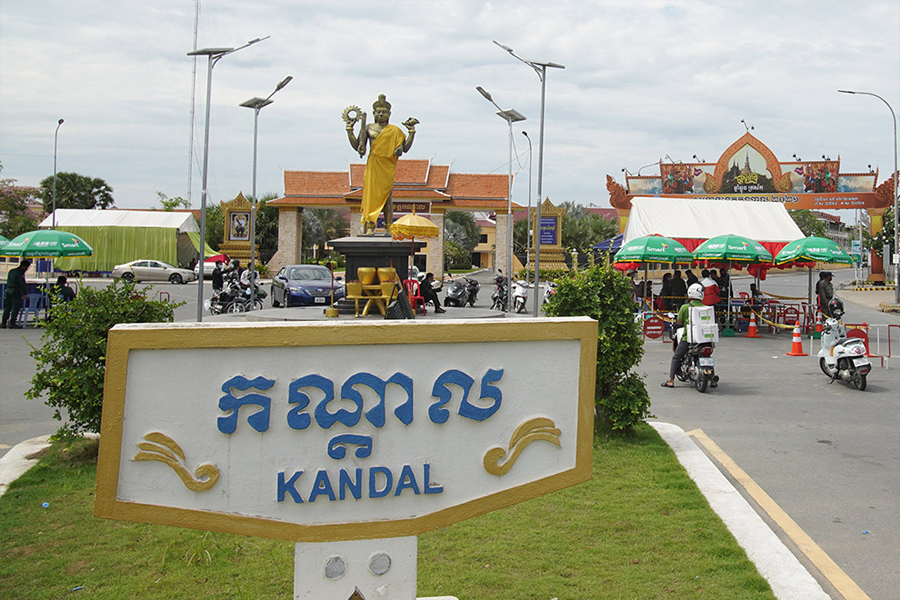
Kandal (Cre: Harbor Property)
Kandal is home to the former capital of Cambodia, Oudong. Oudong was founded by King Srei Soryapor in 1601, and from 1618 until 1866, it served as the royal capital of Cambodia for 250 years. During the reign of King Ang Duong, the region saw significant development, including the construction of canals, terraces, bridges, and hundreds of pagodas.
In 1866, King Norodom abandoned Oudong and moved the royal court to Phnom Penh, the current capital, located a dozen miles downstream.
During the Cambodian Civil War, Kandal was captured by the Khmer Rouge in March 1974, leading to the devastation of the province.
Despite its turbulent past, Kandal has since moved beyond its history to become a vibrant hub of culture and commerce.
Kandal has a tropical climate, with warm and humid weather throughout the year. The average temperature is about 27 degrees Celsius, with December and January being the coldest and most appropriate months to visit. It is best to avoid the rainy season (May to October) because roads may become impassable. April is the warmest month, so avoid traveling if you prefer cooler weather.
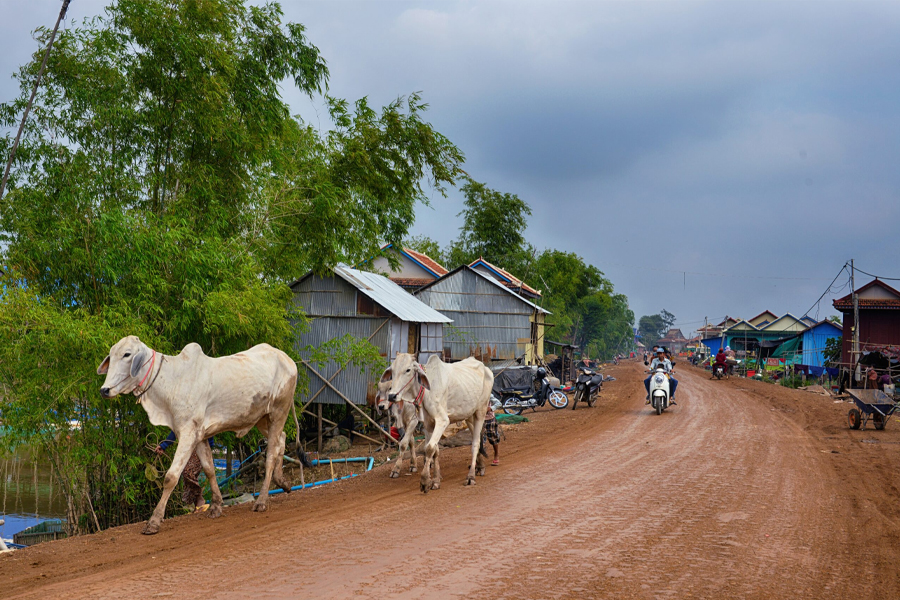
Kandal countryside (Cre: Arise Cambodia)
Oudong is a historic city which was once the capital of Cambodia. It is known for its spires of stupas that rise majestically from the mountaintop, offering a glimpse into the country's royal past. This site was added to the UNESCO World Heritage Tentative List in 1992. In the former capital, you can visit some other small attractions.
Known as the "Sacred Mountain" with five high hills, it is a significant religious location in the old capital of Oudong, where numerous ancient temples and stupas can be found. You may climb the mountain or take a tuk-tuk to the top to enjoy the panoramic view of the old capital and the magnificent Tonle Sap plain.
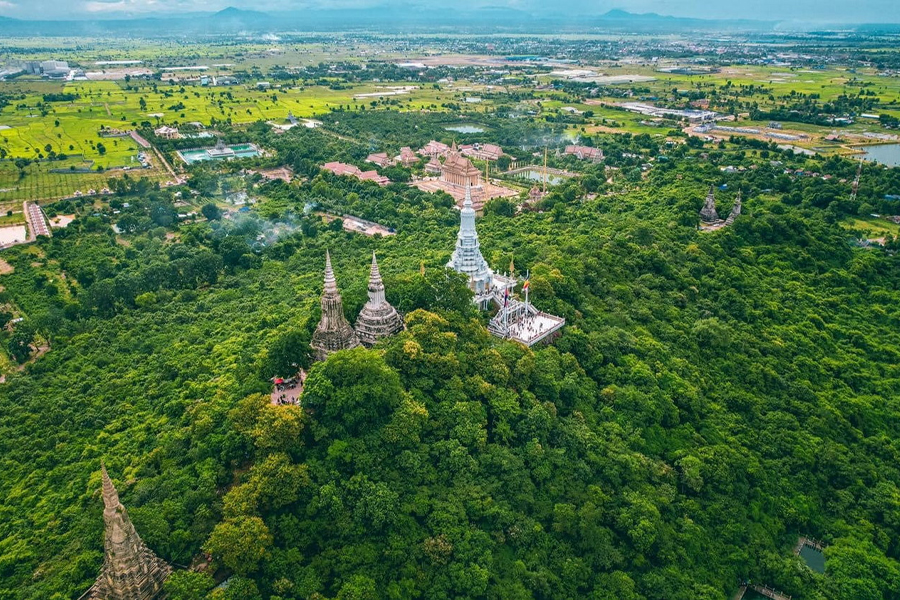
Phnom Oudong Mountain, Kandal (Cre: Dat Viet Tour)
The Buddhist Vipassana Center is a monastery located at the western base of Phnom Oudong. It has expansive grounds that contain a huge pagoda, a chedi, a large Buddha statue, a library, monks' lodgings, and various halls, all surrounded by well-kept gardens. It's a clean, bright, yet calm environment where tourists may roam and admire a functioning Buddhist monastery as well as modern Khmer Buddhist art and architecture.
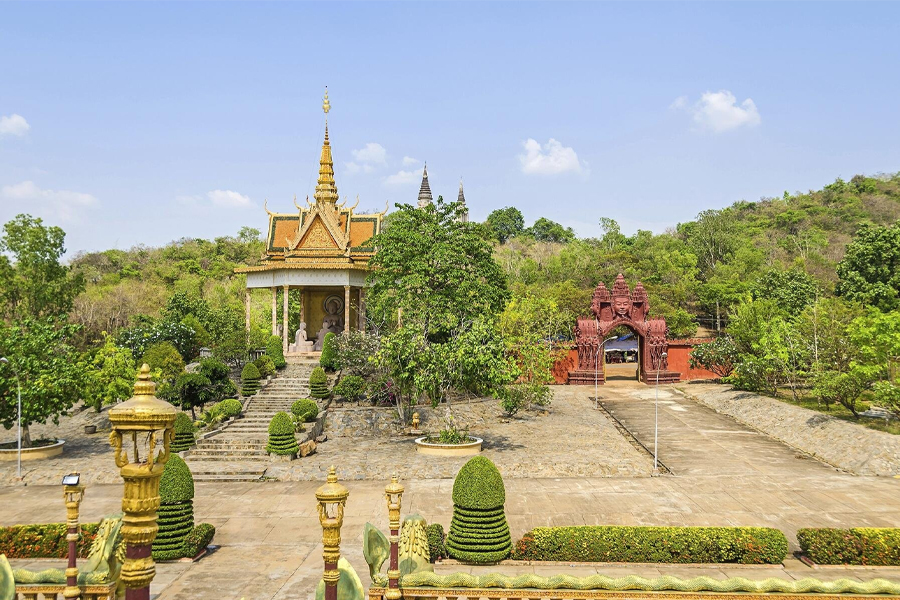
Buddhist Vipassana Center, Oudong, Kandal (Cre: Fodor's Travel)
You can enter the site from Phnom Oudong's northern base, and parking is available at the entrance gate. Because the grounds are large, it's best to bring a hat and a water bottle if you intend to wander around during lunchtime. A stroll to see the Giant Buddha and the chedi can last anything from 30 minutes to an hour.
Preah Reach Troap is a square-shaped construction with a multi-tiered roof. The temple's main attraction is its 90-kilogram golden Buddha figure. It also contains the ashes of King Chey Chettha II and several other Khmer rulers. The stupa in the ancient city of Oudong is made of sandstone and adorned with bright paintings and beautiful sculptures.
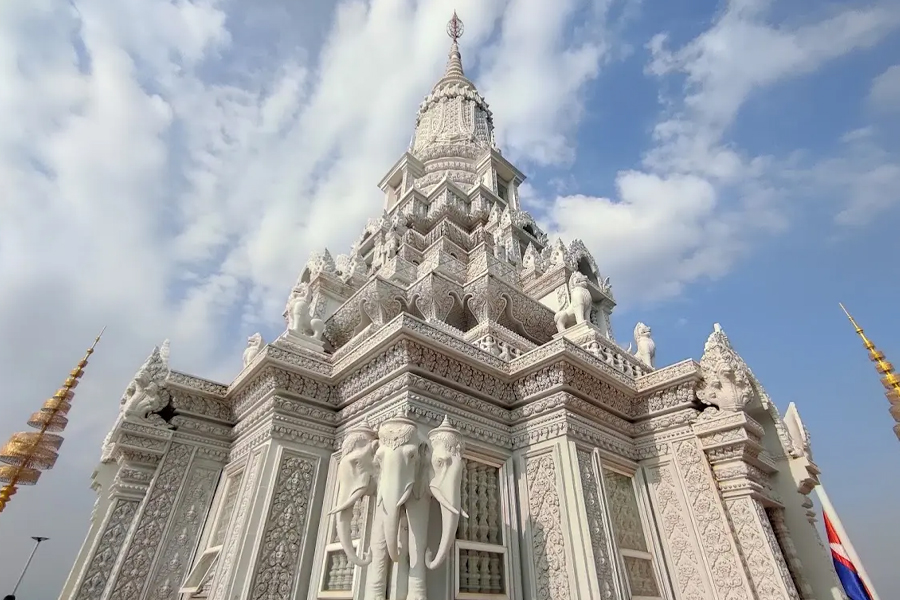
Preah Reach Troap, Oudong, Kandal (Cre: Hello Angkor)
Prasat Neang Khmao Stupa is a Gropa (tomb tower) erected in the 17th century to honor Queen Neang Khmao, the wife of King Chey Chettha II. The tower is a conical brick construction with many stories.
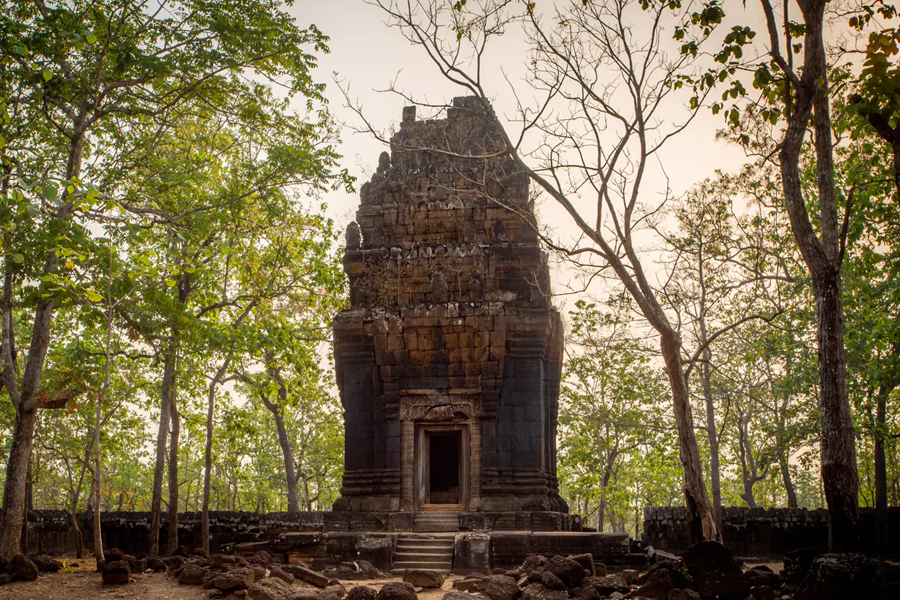
Prasat Neang Khmao, Oudong, Kandal (Cre: Hello Angkor)
Koh Dach, also known as Silk Island, is a picturesque island and a popular tourist attraction located in Kandal. It covers a total of 30 square kilometers. If you’re seeking a break from the hectic life, you can find solace on this secluded island, which is reachable within minutes from Phnom Penh by boat. When you visit Koh Dach, you can enjoy fresh air and recreation at the riverside resort, which is ideal for those seeking peace and quiet.
The island is also known for its traditional handicrafts, including silk weaving, pottery, dyeing, and wood carving. You can visit local workshops, street shops, and handicraft centers to purchase these local items. Additionally, you can explore local villages and observe the lifestyle of villagers living near the Mekong River.
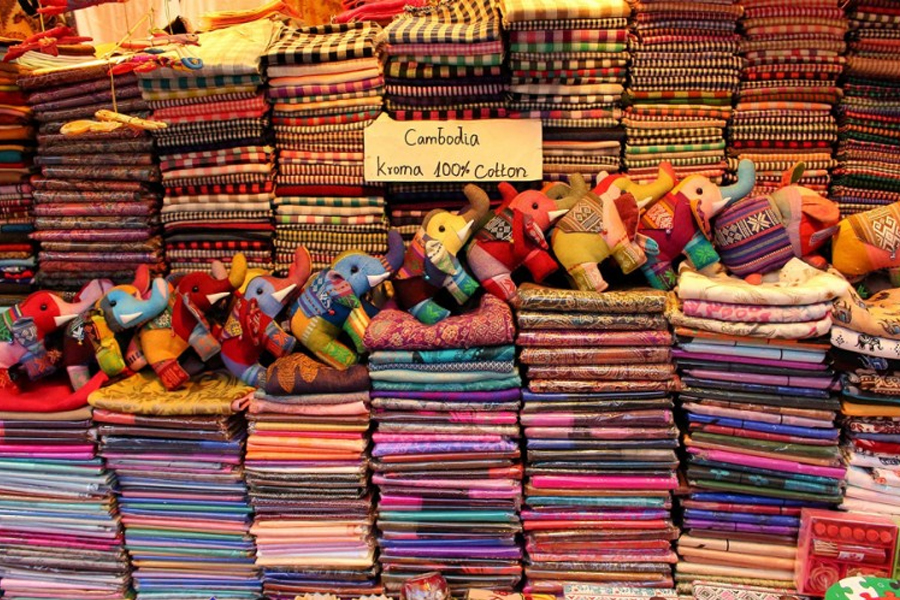
Handicraft market in Koh Dach, Kandal (Cre: Harbor Property)
Sa Ang Mountain is another mountain to visit in Kandal. This natural and cultural site features a pagoda at its peak, offering panoramic views of the surrounding landscape. Although the mountain has fewer trees, it has a large lake near the pagoda, filled with fish and water lilies. You can enjoy boating and fishing in this serene setting.
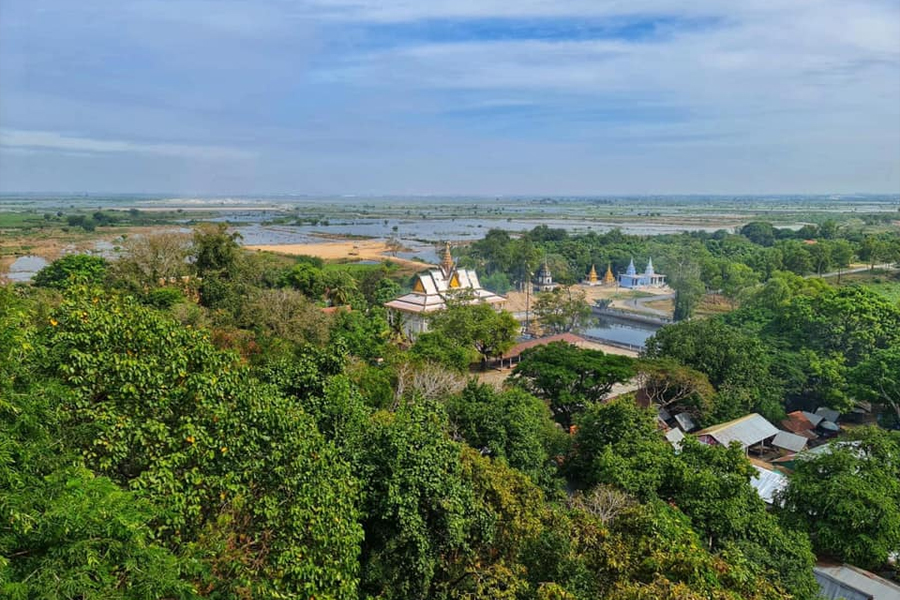
Sa Ang Mountain, Kandal (Cre: Harbor Property)
During the rainy season, Sa Ang Mountain transforms into a small forest island with cool and fresh air. Provincial tourism services and local authorities have recently made efforts to promote tourism by planting more trees and improving security and sanitation, making it a popular destination during traditional festivals and public holidays.
Another mountain site in Kandal, Prasith Mountain consists of two hills: the East Hill and the West Hill. While the West Hill lacks notable folklore, the East Hill is rich in religious and royal history, featuring a large statue of the reclining Buddha reaching nirvana.
Although Prasith Mountain lacks large trees and has no current development plans, it offers beautiful scenery, fresh air, and deep cultural and historical significance.
See more: What do you need to prepare when traveling to Cambodia?
Kandal is easily accessible by a variety of modes of transportation due to its closeness to Phnom Penh.
Kandal has many bars and restaurants. For an authentic culinary experience, local restaurants present a range of tasty noodles and rice meals. Khmer food here frequently incorporates elements of Vietnamese and Thai cuisine, and meals are generally very cheap.
Say Sabok Restaurant, located by the river, serves a combination of foreign and Khmer cuisine and has a huge bar area. Additionally, numerous rooms are offered for overnight stays.
Another choice is Ses Sor Restaurant, which serves a delicious combination of Chinese and Khmer cuisine.

Fish amok - one of the dishes to try in Kandal (Cre: Dat Viet Tour)
Home to the former capital of Cambodia, Kandal has a distinct blend of cultural heritage and natural beauty. This makes it an appealing destination for anyone who wants to visit lesser-known regions of the country. And if you wish to visit this destination, you can contact Asia King Travel for assistance with trip planning. We will ensure that you have a fantastic trip with excellent service.
See more: Cambodia Tours 5 days